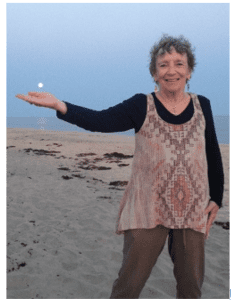Ursula Goodenough is one of the best-known voices in the  religious naturalist orientation. She is author of the book, “The Sacred Depths of Nature” which, examines cosmology, evolution, and cell biology, celebrates the mystery and wonder of being alive, and suggests that this orientation might serve as the basis for “planetary ethic” that draws from both science and religion.
religious naturalist orientation. She is author of the book, “The Sacred Depths of Nature” which, examines cosmology, evolution, and cell biology, celebrates the mystery and wonder of being alive, and suggests that this orientation might serve as the basis for “planetary ethic” that draws from both science and religion.
Ursula is a Professor of Biology Emerita at Washington University. She has discussed religious naturalism in essays, college classes, and as part of blogs and television and radio productions. She participated in conversations with the Dalai Lama sponsored by the Mind and Life Institute. Her work has been discussed in “Religious Naturalism Today” by Jerome Stone and “The Promise of Religious Naturalism” by Michael Hogue.
Some examples of her thoughts and writing can be seen at the following links: https://deeptransformation.network/posts/32621860
https://soundcloud.com/nature-revisited/episode-92-ursula-goodenough-religioius-naturalist
Ursula is the mother of 5 children. She is a long-term member and served as President of the Institute on Religion in an Age of Science (IRAS). She wrote three editions of a widely adopted textbook, Genetics, served as president of The American Society for Cell Biology, and was elected to the American Academy of Arts and Science and the National Academy of Sciences